I looked at the town’s location on the map, and I was instantly intrigued. I had never been this far from the shore: Alice Springs is tucked 1200 km from the nearest ocean. And it appears to be almost at the very heart, the dead center of the continent.
Roger, the hostel manager, whipped out a street map this time and scribbled all over it. “Follow the river,” he said with a smile. “Turn left when you reach the corner, and you’ll see the hill.” He was recommending places to visit while we waited for the check-in time.
We trod in the direction of the river but found in its stead a wide groove on the ground, flanked by thirsty trees. The Todd River reminded me of my college love life: dry, wanting, and — to a certain extent — non-existent. It’s there, but the exposed riverbed doesn’t give any semblance of activity. As I walked along the river, I began to wonder after whom this river was named. The answer to that, of course, is Sir Charles Todd, a telegraph pioneer and Postmaster-General of South Australia from 1870–1901. And then my silly self wondered why.
Silliness aside, this river may be ephemeral, but it is significant in the history and culture of this part of Central Australia. When the Europeans started building a settlement here in 1871, they thought the river was a permanent waterhole, only to find out later that it is dry 95% of the year. (So no, they didn’t name it after Mr. Todd because he was dry in any way.) When the river flows, the sediment-loaded water comes from the MacDonnell Ranges through the center of Alice Springs down into Lake Eyre in South Australia.
I hit the intersection and turned left to find the Anzac Hill, rising not too far away. A metal arch announced the name of the staired trail that climbs up a carpeted but rocky slope to the top, where two flags danced with the wind gracefully: the national flag of Australia and the flag of the Northern Territory. It was an easy ascent, but the harsh high-noon sun made it a tiny bit more strenuous. I claimed one of the benches surrounding the site and caught my breath, and then went through the markers one by one.
ANZAC is an acronym for the Australian and New Zealand Army Corps, and this monument was originally built in honor of the men and women who made the biggest sacrifice in World War I. Later on, it was later expanded to pay tribute to everyone who has served Australia in the great wars that she has participated in. The monument was designed by Rev. Harry Griffiths and was unveiled by Dudley Adamson, the first postmaster of Alice Springs. Every year on April 25, a remembrance service is held on-site.
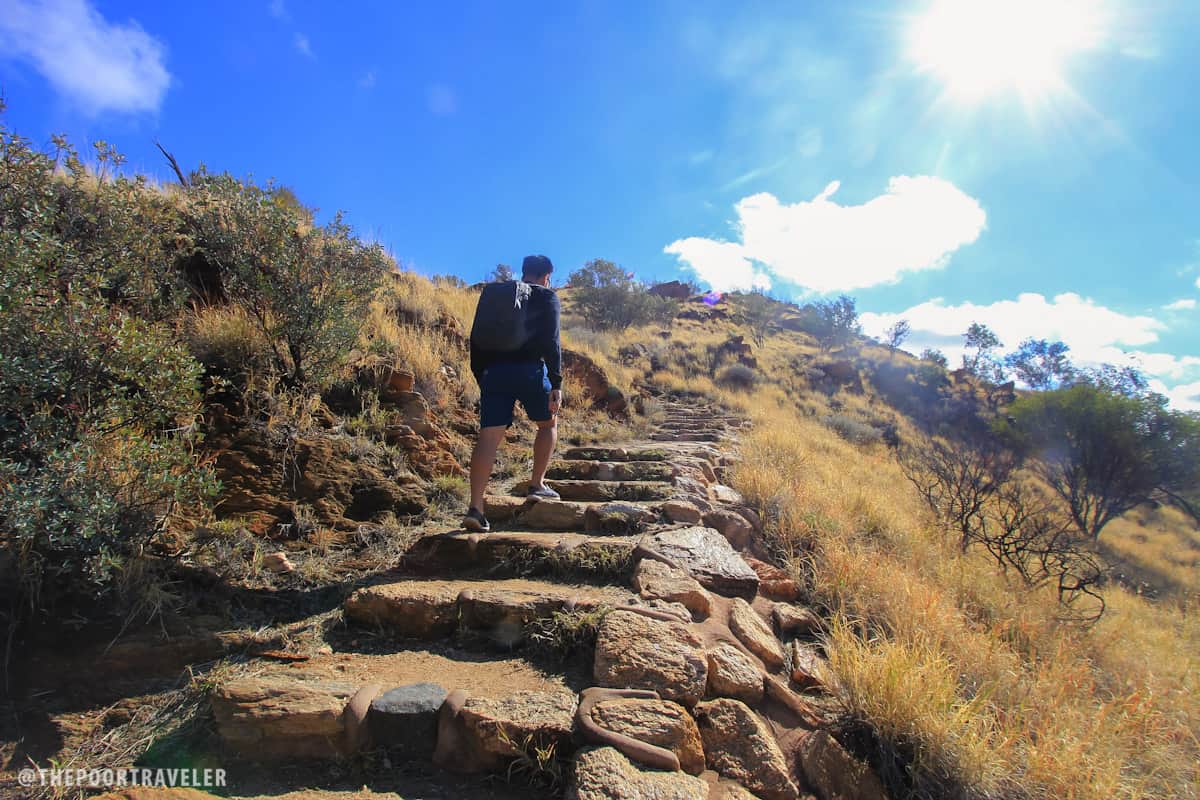
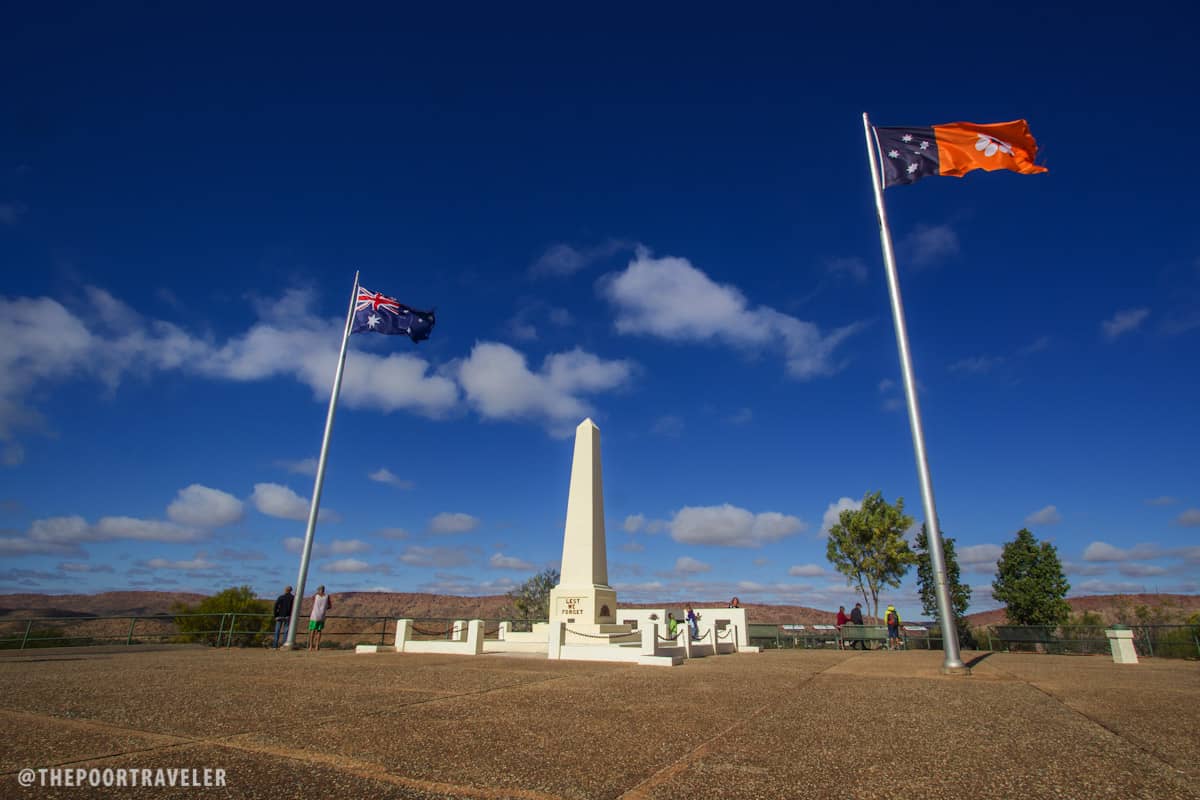
Anzac Hill is also a fantastic lookout, allowing breathtaking panoramic views of the town: from the flat townscape made of malls and stores to the arresting escarpments that stand proudly in the distance. Around the site are a couple of markers narrating a brief history of the town. It is a small settlement, something that becomes apparent when seen from atop Anzac Hill. But with over 28,000 inhabitants, this little town is actually the third largest in the territory.
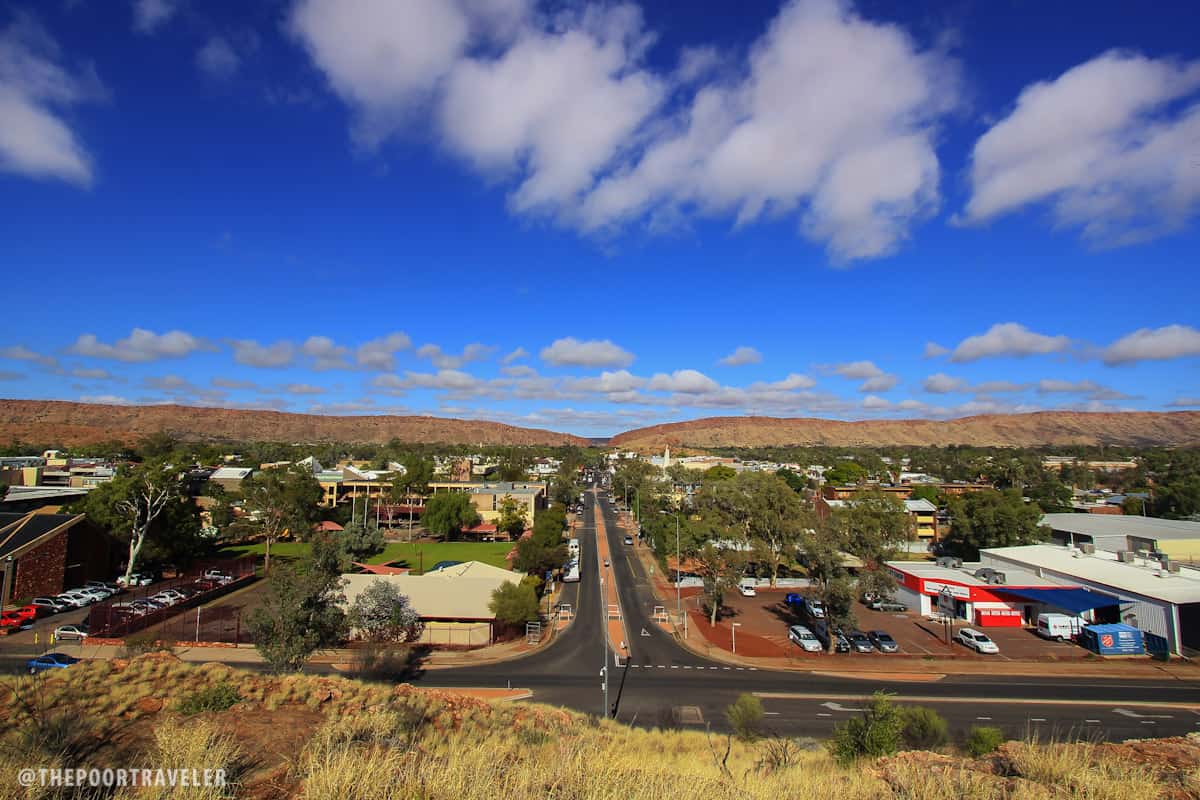
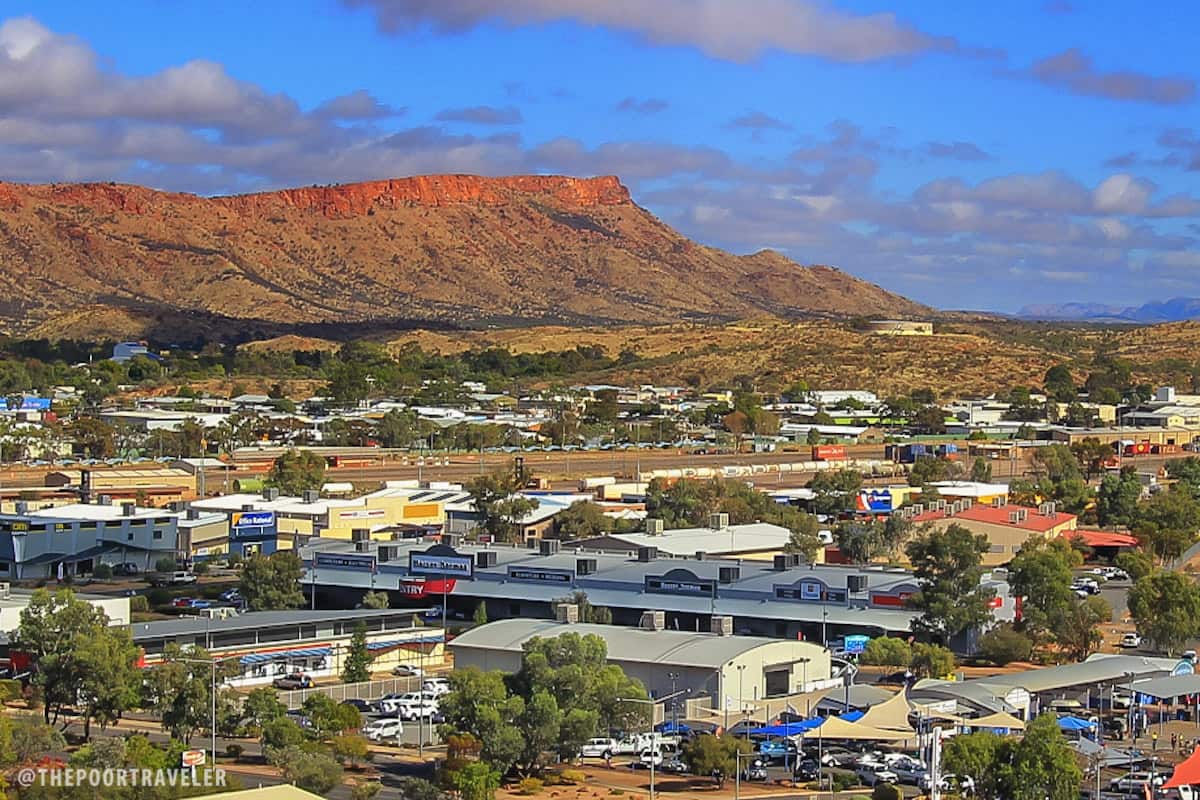
To the Aborigines, Alice Springs is known as Mparntwe. Way before Europeans arrived, it is an important place to the Aboriginal Aranda (Arrernte) people, who have been calling it home for more than 30,000 years. It was John McDouall Stuart who first led an expedition through this part of the continent, establishing a south-north route from Adelaide to Darwin.
The town got its English name from Lady Alice Todd, wife of Sir Charles Todd, ten years later, when Britain constructed a radio repeater station in the area. In 1887, alluvial gold was discovered near the area, attracting people to settle in Alice Springs. When World War II broke, the town became an important staging base for the Australian military. It also became the temporary home for the military personnel when Japan air-bombed Darwin. Many of the town’s infrastructures were built during the war. In the 1960s, the government established here a joint defense monitoring base with the United States. Today, Alice Springs is more like a tourist hub, being a major settlement closest to many of the Outback’s most popular tourist destinations including the King’s Canyon and Uluru.
Where to stay: Alice Springs YHA Hostel offers affordable accommodations right at the heart of the town center. Kangaroo Dundee Tours and Outback Tours (to Uluru) are also available.
Book here: Alice Springs YHA Hostel.
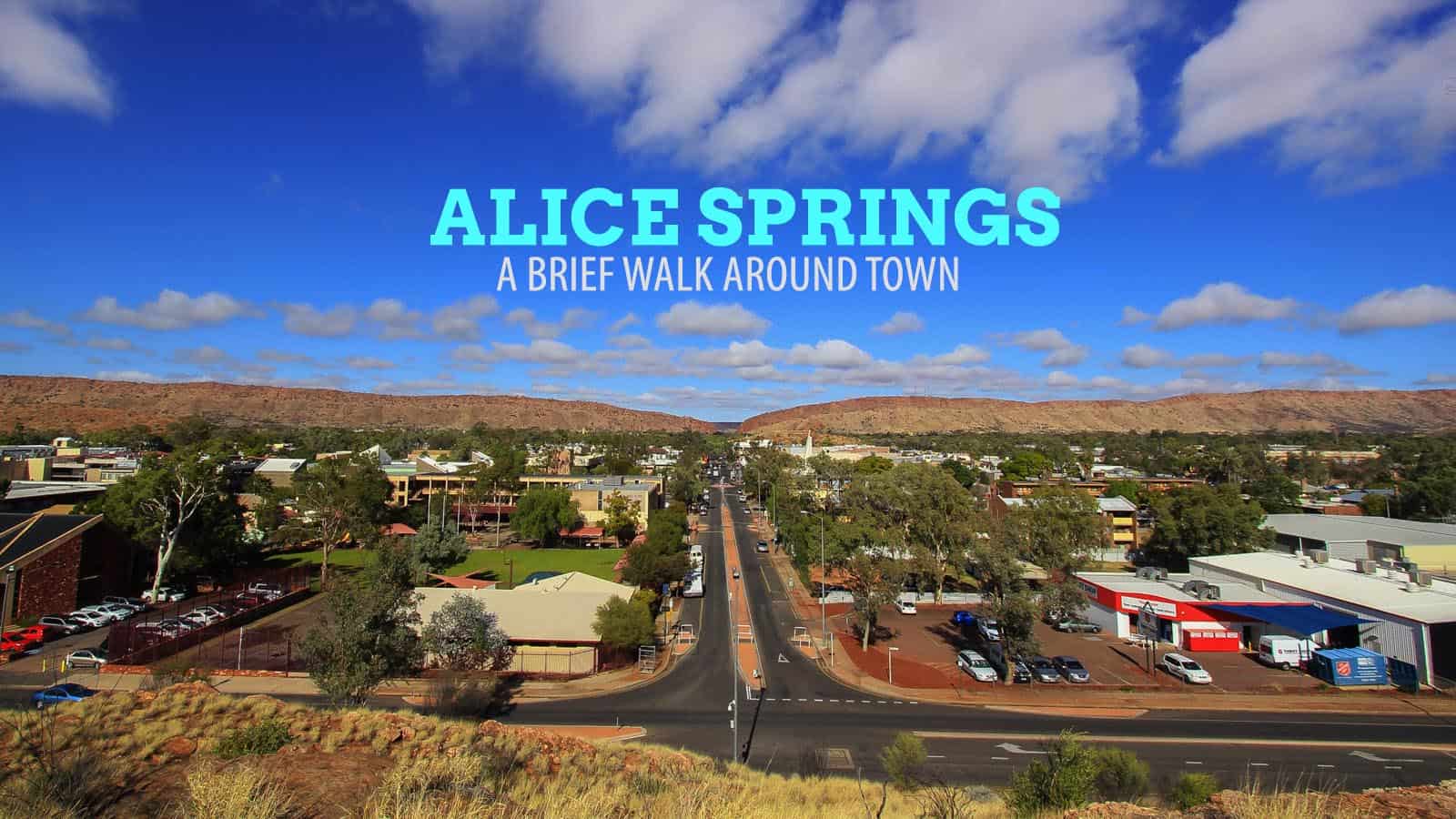



 Where to stay: Alice Springs YHA Hostel offers affordable accommodations right at the heart of the town center. Kangaroo Dundee Tours and Outback Tours (to Uluru) are also available.
Where to stay: Alice Springs YHA Hostel offers affordable accommodations right at the heart of the town center. Kangaroo Dundee Tours and Outback Tours (to Uluru) are also available. 




















The view from ANZAC Hill is stunning, wow! What a cute little town.
Does Alice Springs have any economic activity?… Im curious about this what type of industry are located there?.. I can see a lot of huge warehouses ( it seems to be warehouses), would like to know more about, this short article is very impressive.
Thanking you beforehand for your kind attention.
There is, but not much. There are banks, stores, restaurants, malls, etc. but concentrated within a very small area.